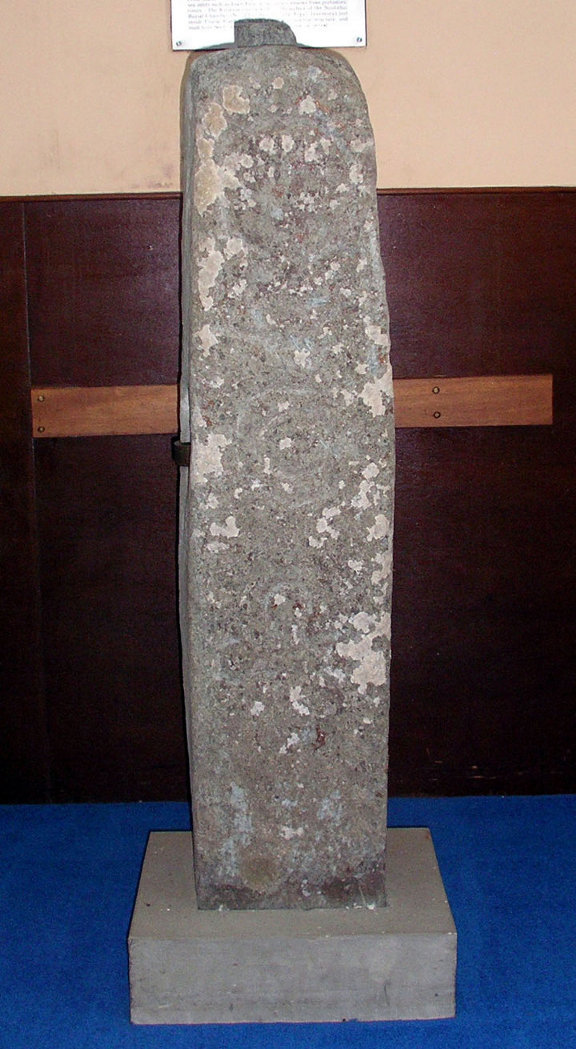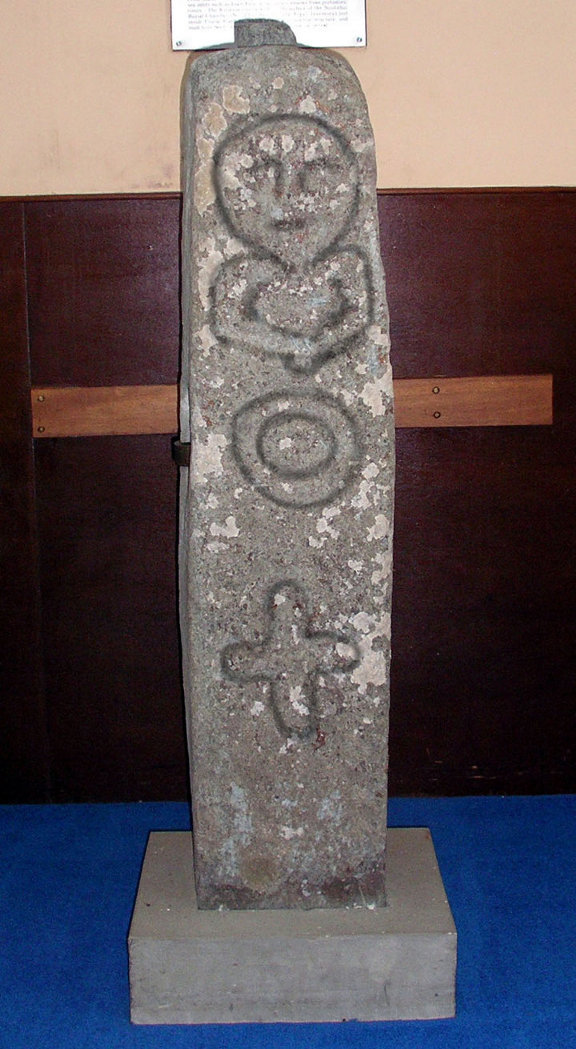Contents

The Figure
The following information comes from Marc Calhoun who very kindly allowed the use of his picture left.
“First recorded position of this stone was that it was embedded in the north wall of Killevin (Cill Eibhinn) burial ground near Crarae (NR 987 973). It is a pillar stone that stands some 3.5 feet high, 9 inches wide, and 8 inches deep. Incised in the top of the pillar is a figure that, to me, resembles the Janus figure on Boa Island. It is a head, possibly bearded, with worn arms that appear to cross below the face. Below the head is double circle (or boss), and below this is an equal armed cross. There is a transverse hole through the pillar behind the boss, which may have been used to place cross arms, or as a way to carry the stone.
Described by K M Dickie (1962) as “A stone, 3’ high and 9” to 10” wide, in the N wall of the graveyard is a Sheela-na-gig (a grotesque female figure, Irish in origin).”
The stone fell from the wall of Killevin cemetery in 1991, and was subsequently moved to Cumlodden Parish church (Furnace) for safekeeping (NS 015 998). A plaque in the church dates it to the 8th or 9th century, but it makes no reference to the possibility of the stone being a Sheela, and instead refers to it as a cross-shaft, and that the figure may be that of Christ. The plaque also has a drawing of the figure that includes detail not easily visible on the worn stone today. I do not think this is a Sheela. Possibly the circle (boss) positioned at what may be taken to be the crotch of the figure could lead someone to think it is.”
Marc Calhoun
Despite this figure being recorded as a sheela na gig there is no evidence of genitalia even taking into account the worn nature of the carving. The figure appears to have a “hands in lap” stance and the pointed chin seems to indicate a beard making the figure male. All in all I find it hard to see why this figure was recorded as a sheela na gig given the lack of vulva or anything that could be interpreted as such.
John Harding
